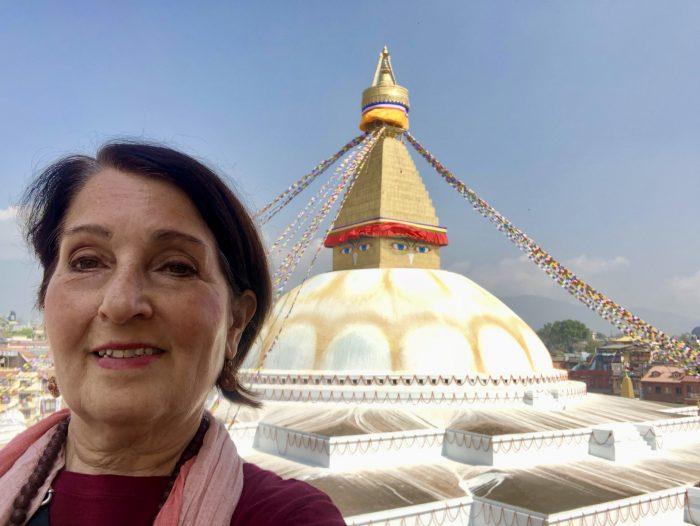
Visibility is poor in Kathmandu. Can you see the tall mountains just outside the city? A faint outline? Nope. The air is dirty and it’s hard to breathe.
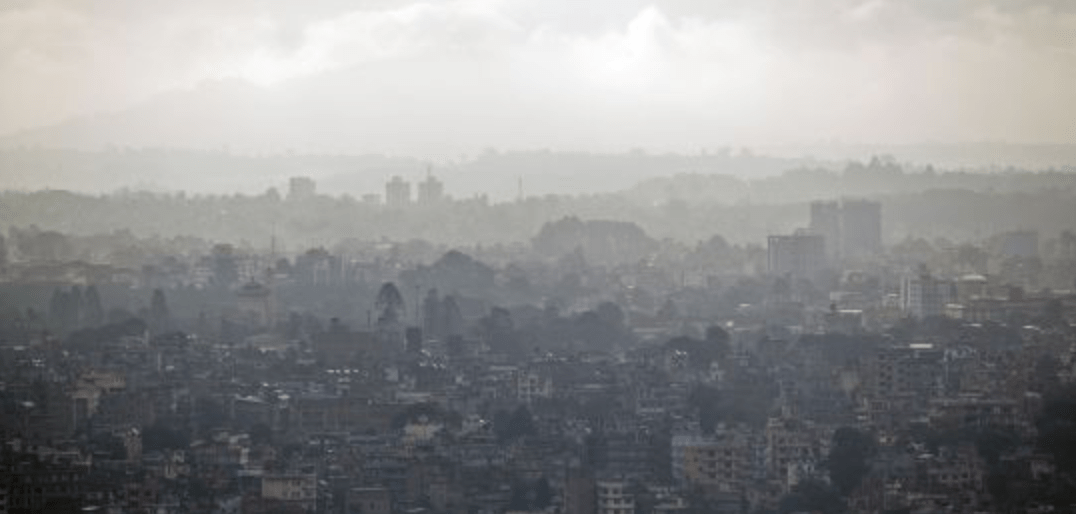
Early morning air is already smoky as thousands of monasteries, homes, and shop owners burn blessing fires. Soon cars and motorcycles fill the streets. By 9 am you can’t take a deep breath. My lungs are tired.

Both Hindus and Buddhists burn herbs for blessing. Kathmandu is full of ceremonial smoke. But how much smoke is needed to purify a city??
Waiting in Kathmandu
Last Monday the Bhutan Immigration Office said I’d have to wait here 6 months to go back! Then yesterday they changed their minds and let me come in two weeks for 30 days. In the meantime, I’m waiting in Nepal doing myriad things I haven’t been able to do. Like deepening my meditation practice, Yoga, Qigong, self-healing, resting, and having fun speaking the Queen’s English.
I’m learning about iPhone photography, eating as well as I can, walking 2 miles a day – around the Boudha, polishing my brain balancing routine, studying Asian culture, and stocking up on things I can’t find in Bhutan. Pretty soon I’ll be able to count to 100 in Dzongkha. Yep. And I’m preparing the Lama’s application for a US Visa. All this waiting is necessary in order for us to come back to the US together. Please give me patience.
Should I Teach the Queen’s English in Bhutan?
Some folks consider British English the BEST. Just for fun, I made this YouTube video to demonstrate the differences between British, American, and Indian pronunciation.
Text: “So you’d like to speak beautiful English? The very first step, you will need to decide which English you want to speak. There are three major genres of English in the world: British, American, and Indian. Each one has its own characteristic pronunciation and expressions. In this video I will show you the secret pronunciation characteristics of each one. As you study English it is important to become familiar with the basic differences between British, American, and Indian accents. Your awareness of these general patterns can sharpen your ears, and help you improve your own communication skills.“
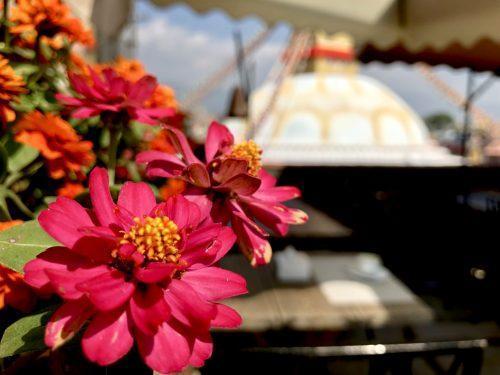
Studying iPhone photography on Facebook. Like close-ups, focus, and best size for quicker loading on cell phones.
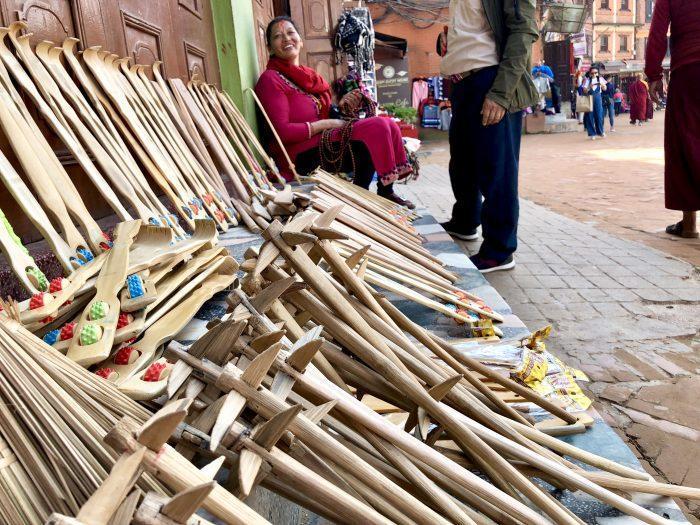
This beautiful lady sells wooden back scratchers and tools to stir Tibetan butter tea.
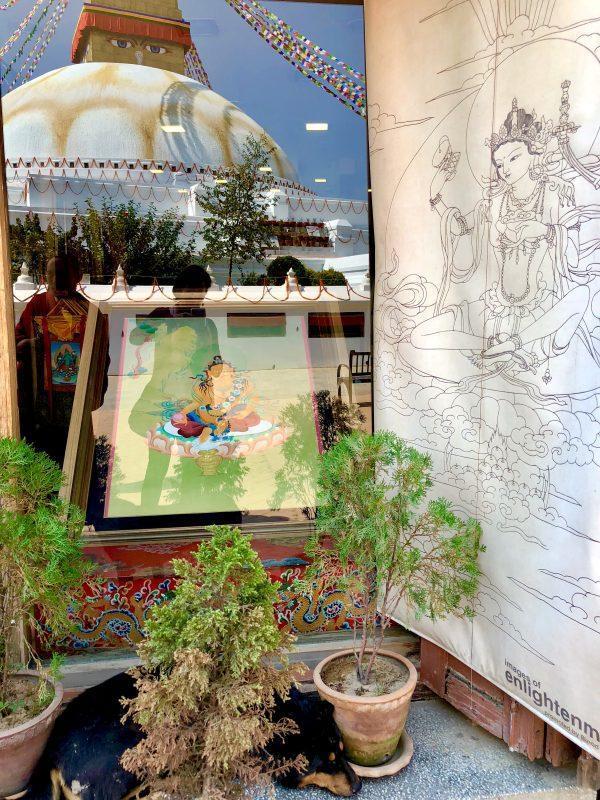
Tibetan thankha paintings start with a line drawing. I liked the Stupa reflection. The dog is a bonus.
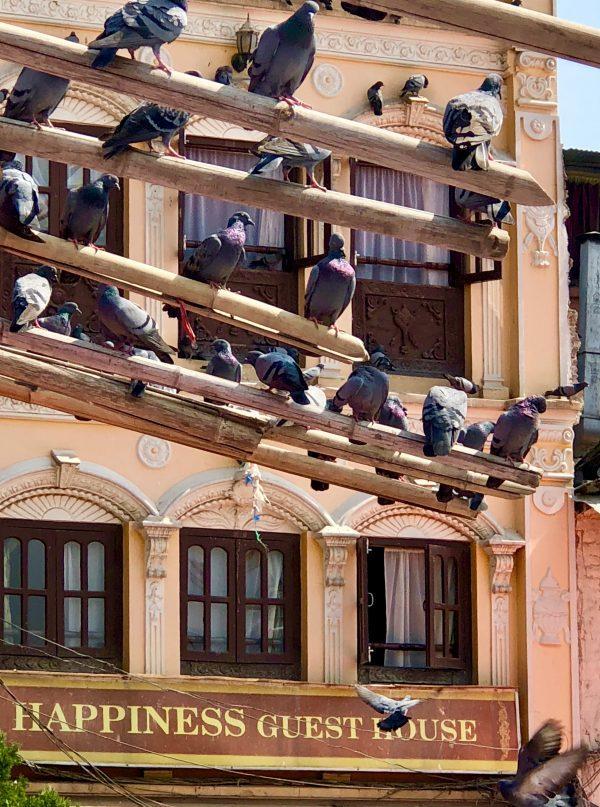
An ornate building with pigeons basking in the sun.

An elderly nun at the Boudha entrance. She collects money for her grandchildren and is said to be very wealthy.

This morning I found the Boudha Stupa draped in thousands of marigold garlands for Dashain.
Dashain Festival: The Battle of the Gods!
Dashain is the most important Hindu festival of the year in Nepal. Forget Halloween, this is far more Earth shaking! This year it happens for 15 days from October 10th to 24th, ending on the full moon. Dashain is counted by the Hindu lunar calendar. It commemorates the conquests of Gods in legendary battles against evil demons. Goddess Durga is worshipped as the symbol of goodness and power.

Who is the Goddess Durga? Well, she’s gorgeous. And she has many arms. She rides a lion and vanquishes a terrible buffalo-headed demon named ‘Mahisasur’ who has spread horror in the world. The first nine days of Dashain are a constant battle. Finally on the tenth day Goddess Durga kills the monster, and good triumphs over evil.
Each day of Dashain has a different historical significance and activity.
- 1st day of Dashain, 10 October, Ghatasthapana – The battle begins. All weapons and tools in the house are gathered, cleaned and put in a shrine room where Goddess Durga is honored. Corn and barley seeds are planted there, to grow into yellow seedlings (Jamara) by the ninth day.
- 2nd – 8th day, 11 – 18 October – The battle continues. On Day 8, Ashtami, animals are sacrificed in the temples of Goddess Durga, to pray for help to win the battle.
- Day 9, 18 October – Nawami: Everyone goes to the temple to pray to the Goddess Durga. Get ready for the final battle.
- 10th day of Dashain, 19 October, Vijaya Dashami – Goddess Durga finally defeats demon Mahishasur. Good overcomes evil. Victory is celebrated with blessings and delicious food. Pay honor to family elders. Receive blessings of red Tika on the forehead and Jamara sprouted grasses. Visits as many relatives as possible to collect blessings.
- Day 11-14: Ekadashi – Chaturthi: Tika blessings continue. Visit more elders.
- Day 15 – 24 October – Dashain ends on the full-moon, Kojagrat Purnima. On this day, people do a fast and do not eat. They stay home, make Kheer pudding, and stay up all night. Laxmi (the goddess of wealth) is worshipped on this day. People are now ready to work and acquire virtue, power and wealth.
On Day 9 I walked by this ceremony of families praying to bloodthirsty Kali, an aspect of the Goddess Durga, in the form of nine young girls, who symbolize the Goddess in her struggle. The nine girls are all dressed up and given fruits and other delicacies to eat. People come to offer, money, blessings, and prayers to vanquish evil forces.
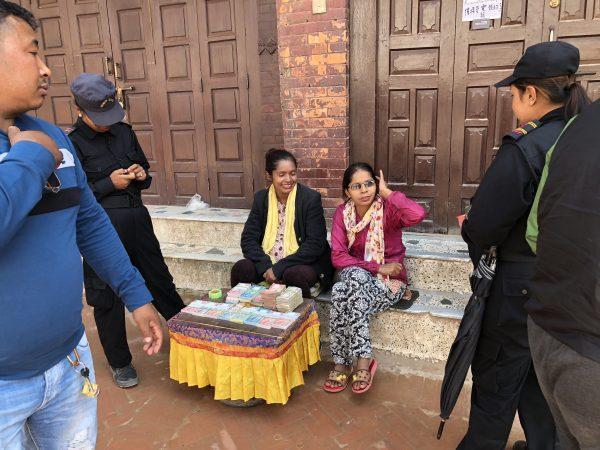
These ladies sit on the street and sell piles of money. During Dashain everybody needs small crisp bills for blessings. Oh, and also for card games all night on the 15th day fo Dashain. Yep. There are no coins in Nepal, so these paper bills come in all sizes and colors. Police stand nearby.
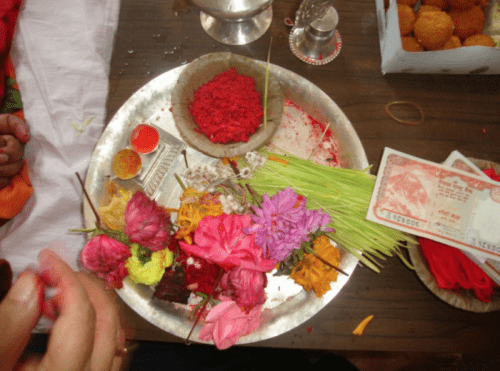
Days 11-14, The battle is over. Family elders bless everybody putting red Tika on the forehead, giving Jamala grass sprouts, fresh crisp money and sweets.

When you get blessed by a family elder, you’ll have red Tika on your forehead, Jamala grass in your hair, and some new money in your pocket! See the closed shops? This week most Hindus are away celebrating. Just Buddhists and a few Muslims’ shops are open.
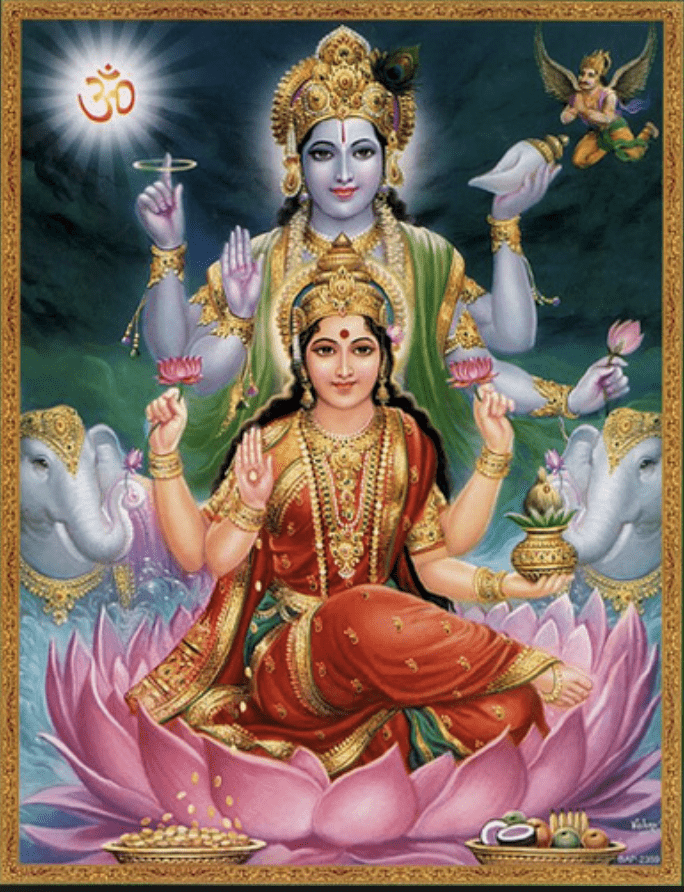

Kheer pudding is delicious, made with milk, sugar, cardamom, raisins, saffron, and nuts. On the last night October 24th, Kheer is allowed to sit in the moonlight to soak up its rays. When the rays of the moon fall on the Kheer, it becomes especially beneficial and pure. In the morning they break their fast and eat the Kheer.
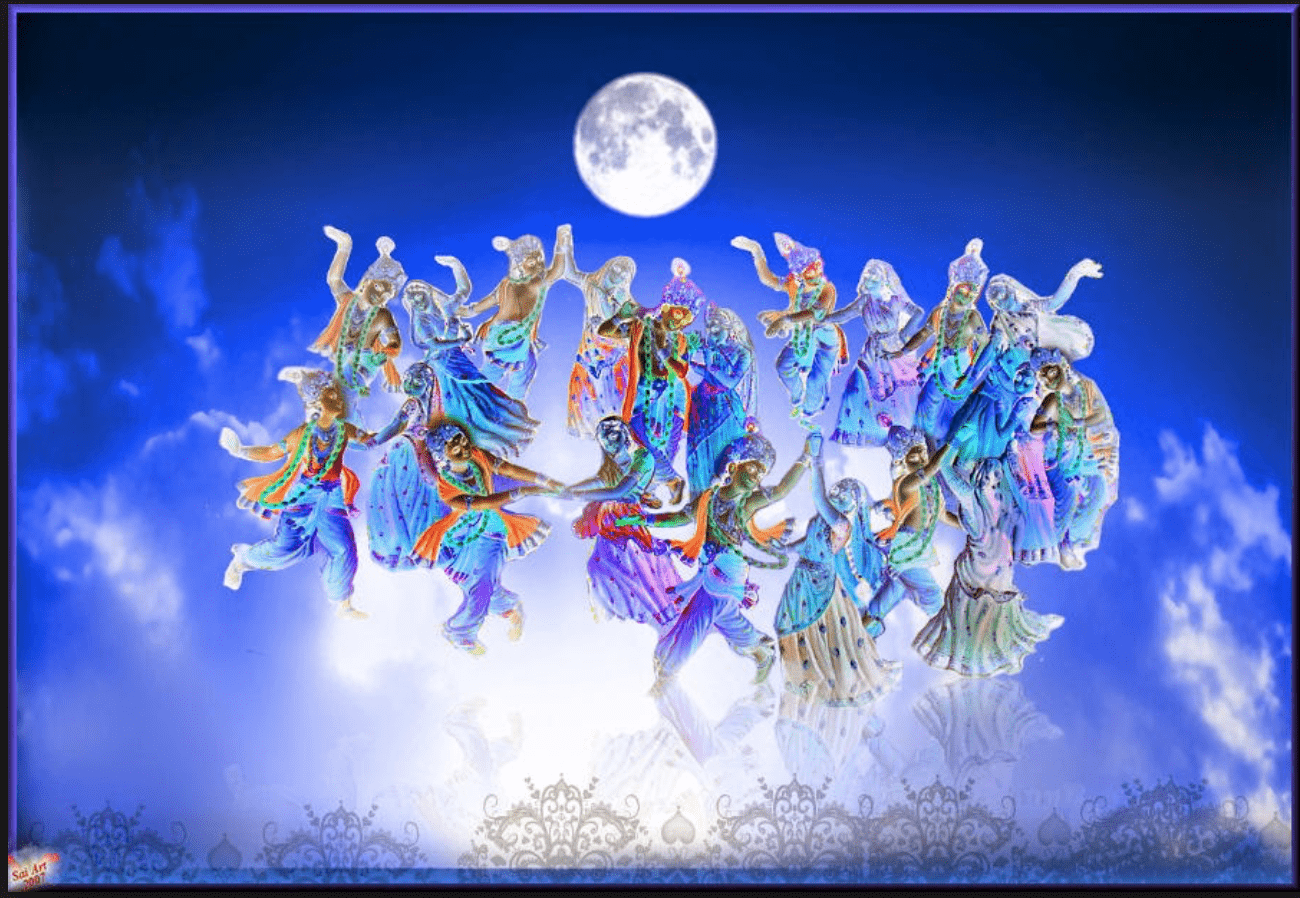
Medical benefits of the full moon October 24th:
According to Vedic astrology, when Jupiter and moon are together in same sign or in mutuality, it forms a special harmony called Gajkesari yoga. Jupiter is known as the karak planet of wealth, knowledge, fame, luck and children, while Moon is known as karak planet of heart, softness, mobility, happiness and prosperity. Hence, Gajkesari yoga gives the person a lot of opportunities to earn wealth. Persons having Gajkesari yoga in their horoscope can especially benefit from these planets.
October 24th is the full moon, Kojagrata Purnima, when the moon is closer to earth. On this night the moonlight has special properties that can cure illnesses and restore good health. Kheer pudding is prepared and kept under moonlight for the whole night and eaten in morning. As moonlight enhances the nutritive qualities, eating the Kheer the next day can purify the body and soul. We can also improve our eye sight by looking at the moon for a few minutes without blinking.
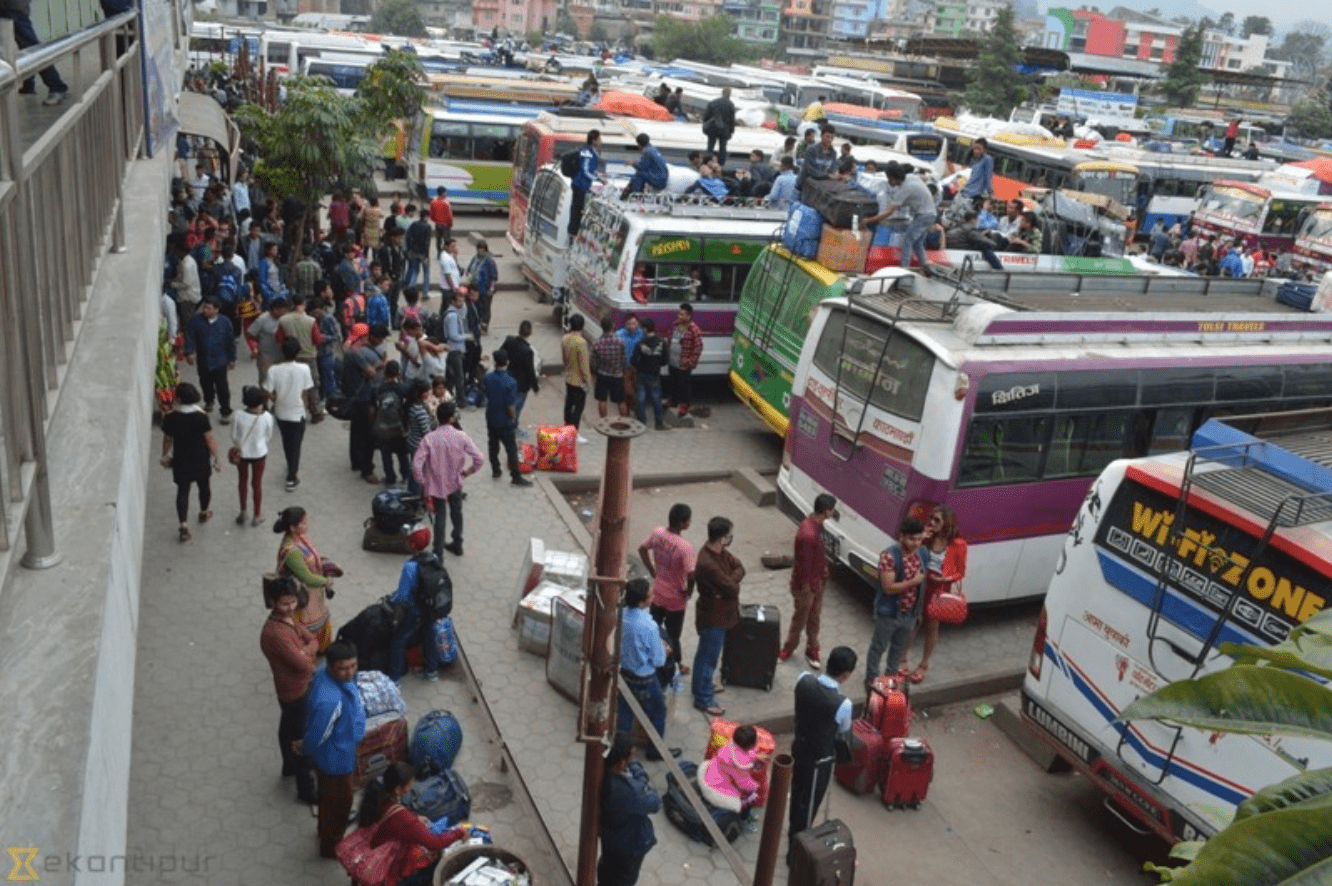
Thousands of Nepalis leave by bus for their native villages to celebrate Dashain with their families. Kathmandu is a ghost town this week as many Hindus are gone. Most stores are closed. Tailors busily make new clothes for everyone. Delicious food, animal sacrifices, bamboo swings, and kites are traditional for Dashain.
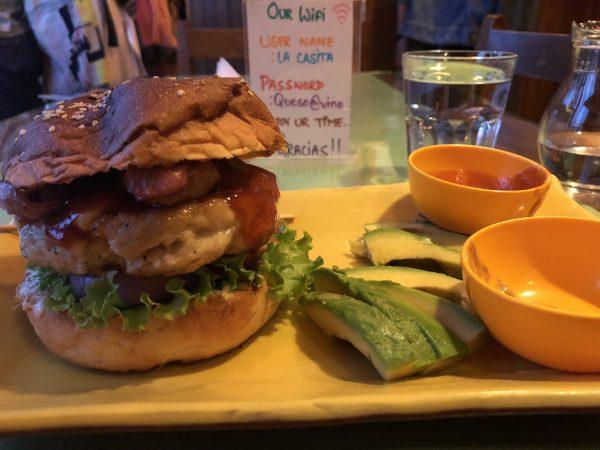
Can’t believe I ate a burger yesterday. Chicken hamburger at La Casita tasted pretty good. I subbed avocado for fries. Sadly they used unhealthy GMO soy oil and I was sick that night.
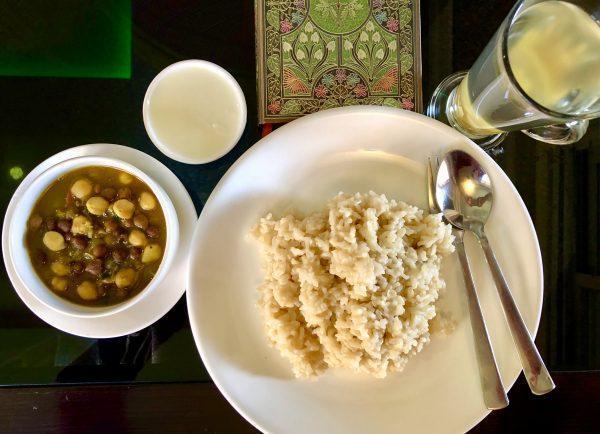
The owners of the Butsugen spoil me. They make anything I want with healthy ingredients. Today I had sprouted brown rice with chick pea dahl, yogurt and ginger tea. I felt revived.

Bhutan recently received the prestigious “Earth Award” in a ceremony in Berlin, Germany. A jury representing leading sustainable agencies selected Bhutan from over 100 top sustainable destinations. The trade show recognized destinations committed to sustainable tourism, and showcased ‘green destinations’ in the world. Yay!
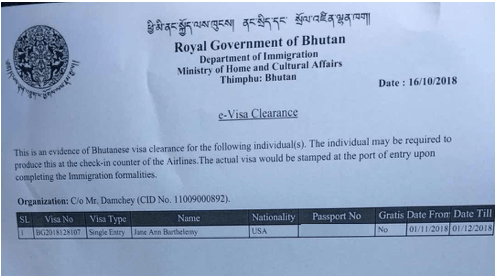
Good news! Today my Bhutan visa finally came through for 30 days. November 1 – December 1. Hooray!
Thanks for tuning in. I’ll be in Kathmandu for two more weeks. Then I’ll be back to Bhutan.
My travel blog comes out on Fridays if I have internet. Bye!


